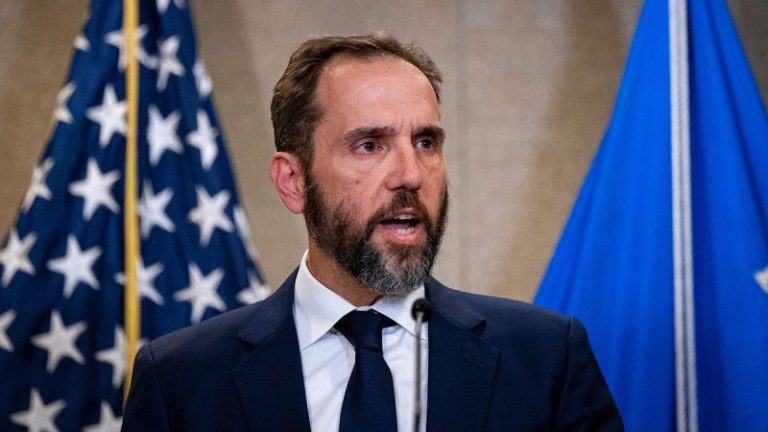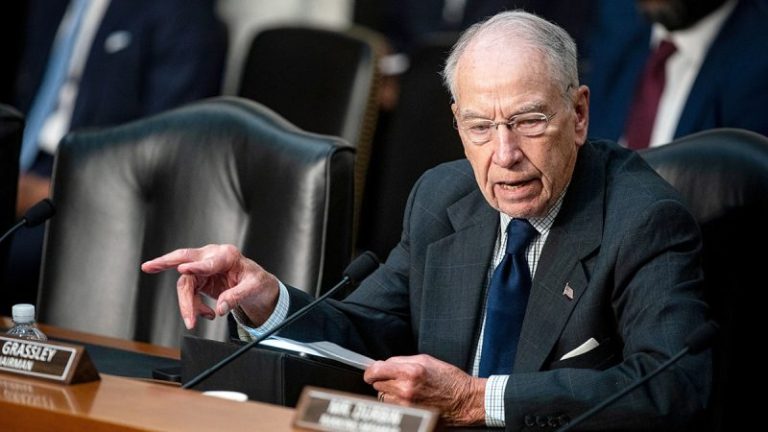U.S. travelers could soon start to feel the pain of the ongoing government shutdown, Transportation Secretary Sean Duffy warned on Thursday.
Duffy joined House GOP leaders at their daily press conference on Day 23 of the shutdown to talk about the difficulties Congress’ fiscal standoff is putting on the nation’s air traffic controllers.
The Trump Cabinet official said air traffic controllers he’s spoken with were ‘angry’ and ‘frustrated’ about being forced to work without pay — noting that Tuesday, Oct. 28, will mark their first full missed paycheck if a sudden breakthrough does not happen on Capitol Hill by then.
‘Safety is paramount for us. And so, if we don’t have the staffing levels in a tower TRACON or center, you will see us delay traffic. You will see us cancel flights,’ Duffy said. ‘It’s not moving as many flights as possible. It’s moving as many flights as possible safely. That is our mission.’
Duffy said that many air traffic controllers are already working under difficult conditions, noting they would get even worse if the shutdown persists.
‘If you have a controller that’s working six days a week but has to think about, ‘How am I going to pay the mortgage, how am I to make the car payment, how am I going to put food on my kid’s table?’ They have to make choices, and the choice they’re making is to take a second job,’ he said.
House Speaker Mike Johnson, R-La., noted that roughly 13,000 air traffic controllers and 50,000 Transportation Security Administration (TSA) officers will work without pay the longer the shutdown goes on.
‘There were 19,000 delayed flights from Saturday to Monday and an additional 1,600 canceled flights during that same period. That number is only going to increase as the Democrat shutdown continues,’ Johnson said.
‘We are rounding into a holiday season, as we all know, and we’re in the middle of the height of the football season. This is peak travel time for the U.S. Hundreds of thousands of Americans are going to travel to football games this weekend, for example.’
The U.S. air traffic control system has already been dealing with years-long staffing issues, forcing existing workers to take on grueling shifts with little time off. But the shutdown’s compound effect on the current workforce could exacerbate longstanding issues.
It comes just over a month before millions of Americans are expected to travel for the Thanksgiving holiday and the end-of-year holidays a month after that.
‘I want to reiterate, we are all about safety. And we will make sure we work every day on that part of our job,’ Duffy said. ‘But again, I can’t guarantee you that your flight is going to be on time. I can’t guarantee you that you’re not gonna be canceled. It’s going to depend on our air traffic controllers coming in to work every single day.’
At another point, he blamed Democrats for resisting the GOP’s government funding plan for over a month and prolonging the shutdown.
‘I do think, in the Democrat senators’ hearts, they want to vote to open the government up. They don’t want to hurt the American people. But we’ve seen they have a radical base,’ Duffy said. ‘This is because Democrats are concerned about their own hide, and they’ve sold the country to the most radical element of their country. And I think that’s really shameful. It’s too bad.’
The government shutdown shows no signs of ending for now as Democrats and Republicans remain in disagreement over federal funding.
Senate Democrats, who are demanding any funding bill be paired with healthcare concessions from the GOP, have rejected Republicans’ plan — an extension of current federal funding levels through Nov. 21 — 12 times.










